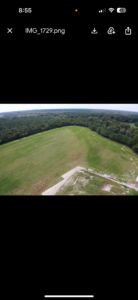Drought and Harvest Question Greene County Peanut Notes No. 258 2025
go.ncsu.edu/readext?1094664
en Español / em Português
El inglés es el idioma de control de esta página. En la medida en que haya algún conflicto entre la traducción al inglés y la traducción, el inglés prevalece.
Al hacer clic en el enlace de traducción se activa un servicio de traducción gratuito para convertir la página al español. Al igual que con cualquier traducción por Internet, la conversión no es sensible al contexto y puede que no traduzca el texto en su significado original. NC State Extension no garantiza la exactitud del texto traducido. Por favor, tenga en cuenta que algunas aplicaciones y/o servicios pueden no funcionar como se espera cuando se traducen.
Português
Inglês é o idioma de controle desta página. Na medida que haja algum conflito entre o texto original em Inglês e a tradução, o Inglês prevalece.
Ao clicar no link de tradução, um serviço gratuito de tradução será ativado para converter a página para o Português. Como em qualquer tradução pela internet, a conversão não é sensivel ao contexto e pode não ocorrer a tradução para o significado orginal. O serviço de Extensão da Carolina do Norte (NC State Extension) não garante a exatidão do texto traduzido. Por favor, observe que algumas funções ou serviços podem não funcionar como esperado após a tradução.
English
English is the controlling language of this page. To the extent there is any conflict between the English text and the translation, English controls.
Clicking on the translation link activates a free translation service to convert the page to Spanish. As with any Internet translation, the conversion is not context-sensitive and may not translate the text to its original meaning. NC State Extension does not guarantee the accuracy of the translated text. Please note that some applications and/or services may not function as expected when translated.
Collapse ▲Question:
I looked at three fields this morning, all on sandy land and planted around May 8th. This area has been dry. The grower noticed this issue starting to occur about 2-3 weeks ago but now the plants are very wilted and brown. The field is patchy but large areas of the field are starting to look like this. There are still some areas of the field that still look healthy. The affected plants have less pods than the healthy plants. I will attach a few photos of this to this email. Inside some of the pods the peanuts look to be molding.
They do want to wait longer in the other fields for the peanuts to mature more. They asked if they should dig the affected areas and leave everything else. Do you have an opinion on doing that? I figured it would be best to just wait and dig at one time.
Jordan:
It depends on what percent of the field is in that shape. If the healthy plants are not mature and need more time and are the primary type of plant, the grower should wait. While not ideal, the stressed plants won’t completely shed if they stay out longer. What percent is not wilting?
Follow Up:
I am not the best at guessing percentage so I took drone photos. The last 2 photos are the same field. I would say the first 2 fields are maybe 40%-50% not wilted but the last field has a lot of wilting.
Jordan:
Great images! The last one could be dug at any time. I don’t think it will get any better. First could wait. Not sure how far they are from being mature.
Jordan:
I might not have answered your question at the end. I just looked back and saw the mold statement. If they can dig bad areas and good areas separately that might help keep a load from going seg 2 that had good peanuts. Actually, they can dig at the same time but harvest separately. Your drone images might help them a lot in this case.
*Seg 3 is a potential issue for the drought stressed peanuts because of A. flavus and production of aflatoxin. Growers in the southeastern US with center pivot irrigation often harvest the corners of fields that are outside the circle separately from the irrigated peanuts to avoid Seg 3 status for the good peanuts. Same logic might hold for the situation we find ourselves in here.




